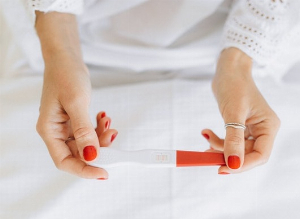Endometriosis: why does it take so long to get a diagnosis?
Published Mar 25, 2023 • By Candice Salomé
Endometriosis is a chronic gynecological condition that affects nearly 10% of women of childbearing age, i.e. 190 million women worldwide and 6.5 million women in the USA.
Despite this high incidence, getting a proper diagnosis takes time. In the meantime, a large majority of women affected with it live in pain.
But how can this lack of diagnosis be explained?
We explain it all in our article!

What is endometriosis and what are its symptoms?
Endometriosis is a condition in which endometrial-like tissue (uterine lining) is detected outside the uterus.
After ovulation, the lining of the uterus thickens in preparation for the possible implantation of a fertilized egg. If no fertilization occurs, menstruation takes place.
In endometriosis, some of the endometrial cells migrate outside the uterus and are deposited on other organs of the abdomen, causing an inflammatory reaction and forming lesions and scars.
These lesions caused by endometriosis have the same characteristics as the uterine lining (endometrium) and are therefore sensitive to the ovarian hormones, estrogens. Thus, they develop and bleed with each menstrual cycle.
This is why endometriosis occurs in women of childbearing age. It can appear as early as puberty and develops starting from the first menstrual cycle. Endometriosis is a chronic disease but it regresses at menopause.
The symptoms of endometriosis vary from woman to woman, but the most common symptoms are:
- Painful periods,
- Chronic pelvic pain,
- Pain during and/or after sexual intercourse,
- Pain during bowel movements,
- Pain during urination,
- Chronic fatigue,
- Bloating and/or nausea.
In the United States, endometriosis affects about 11% of women of childbearing age, i.e. around 6.5 million women. Endometriosis causes chronic pain and infertility (30 to 40% of women affected). Patients are faced with a delay in diagnosis which is almost systematic. On average, it takes 7 years to be diagnosed.
How can this diagnostic delay in women suffering with endometriosis be explained?
At present, the diagnosis of endometriosis can only be made definitively when a biopsy is taken to analyze a fragment of the endometriosis nodule. However, this biopsy must be performed during a laparoscopic operation. Unfortunately, this cannot be scheduled solely for diagnostic purposes, as the biopsy is only performed when it is associated with another surgical procedure.
During their internship the future doctors must study many different conditions. Up until recently, however, endometriosis was not covered (only pelvic pain was): the internship curricula had not been revised for a long time.
Yet, it will take several more years before general practitioners and specialists who have studied endometriosis are able to practice. For doctors already in practice, training is a way to reinforce their initial knowledge.
Thus, the lack of training for doctors and gynecologists leads to diagnostic errors and to endometriosis being diagnosed too late - it takes an average of 7 years between the onset of symptoms and a diagnosis.
Endometriosis has no specific symptoms, although there are some symptoms common to every patient. Ultrasound and/or MRI scans may not reveal anything, and sometimes these examinations may be carried out incorrectly because doctors, with little or no training in endometriosis, do not know what to look for or where to look.
Share your thoughts and questions with the community in the comments below!
Take care!
Sources :
Endométriose - Une maladie gynécologique fréquente mais encore mal connue, Inserm
Endométriose, Organisation Mondiale de la Santé
Endométriose : définition et facteurs favorisants, Ameli
Lancement d'une stratégie nationale contre l'endométriose, Ameli
Stratégie Nationale de Lutte contre l’Endométriose : les annonces du gouvernement, Endomind

 Facebook
Facebook Twitter
Twitter


